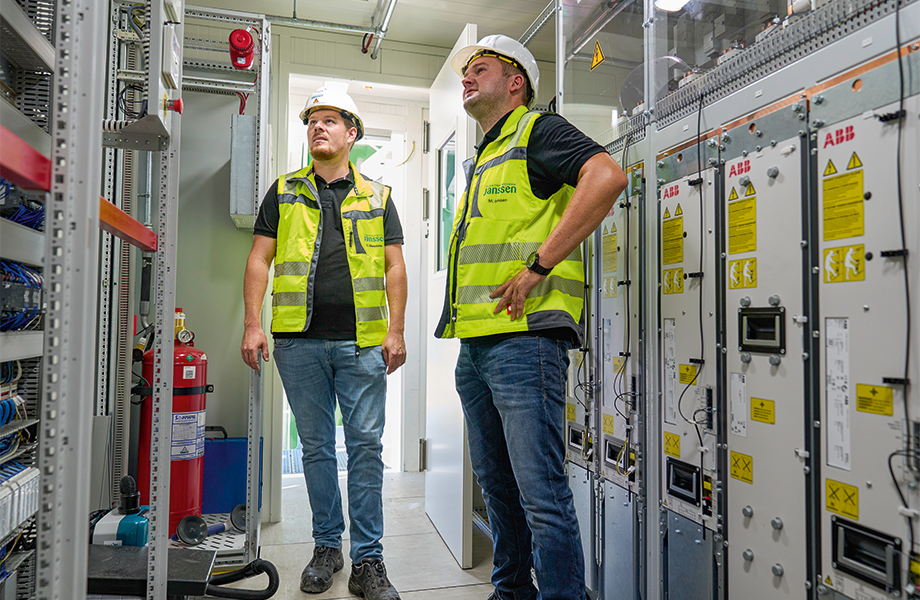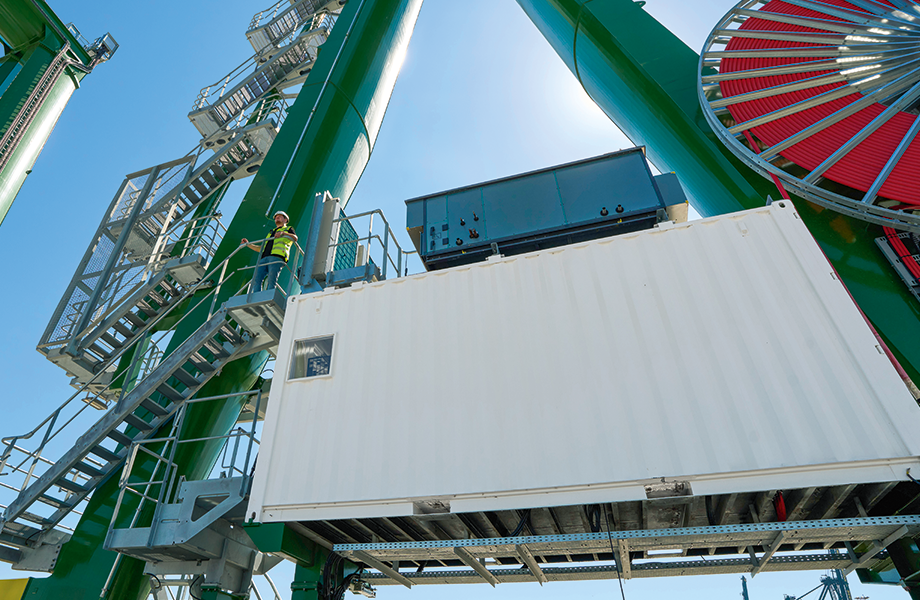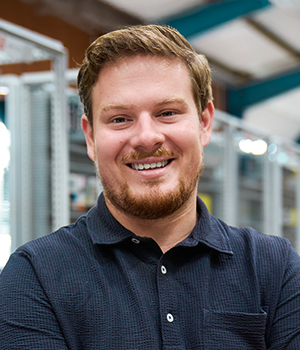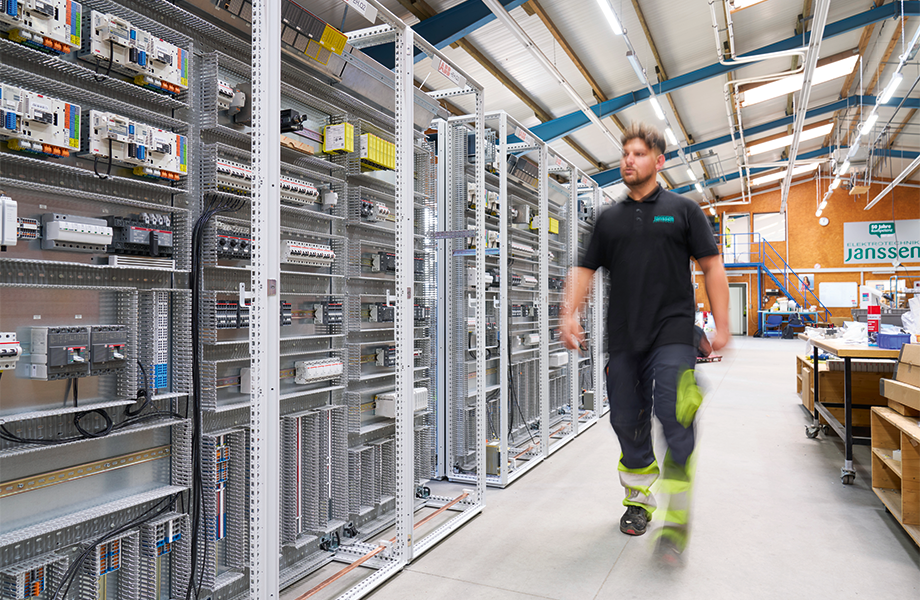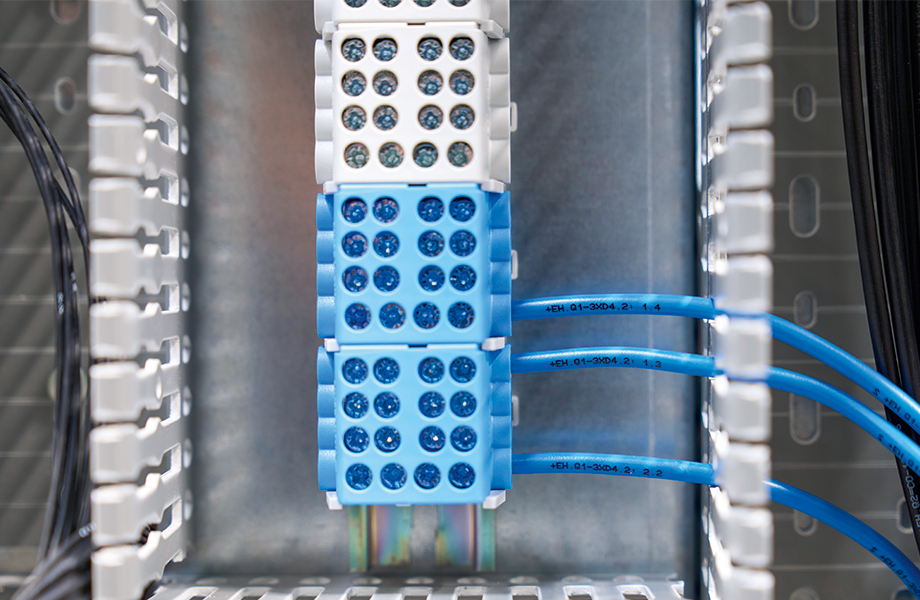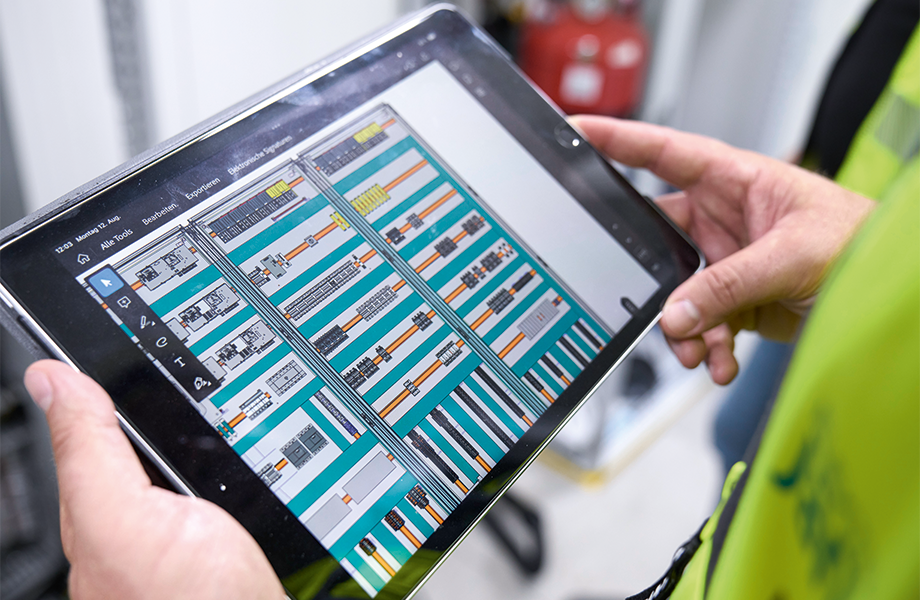Text Alexandra Lachner ––– Photography
For Elektrotechnik Janssen, 2021 was actually a good year. That was when the next expansion stage in a major project was due to start at Container Terminal Burchardkai in the Port of Hamburg. The work centres on control systems for twelve new stacking cranes, complete with connections to the handling systems on both the water side and the land side. What’s more, ETJ was also handling major switchgear projects for local industry simultaneously. It’s the kind of situation every company dreams of – provided they have enough staff to cope with the projects.
As in many places, however, the skills shortage is also posing a problem in Nordenham in Lower Saxony. As Christian Diekmann, who joined ETJ in 2014 and has been the company’s Operations Manager since 2021, explains: “During this phase, we realised we were experiencing a significant bottleneck and had to take suitable countermeasures in order to remain successful on the market. It soon became clear that manual wire processing was the most time-consuming process.”
CAMPAIGN OF PERSUASION
Diekmann therefore started looking for a solution and came across the Wire Terminal WT C from Rittal – a fully automated wire processing machine. ETJ had already been working with Eplan engineering software for over 20 years, and Diekmann was immediately impressed by the overall concept that lay behind the WT C. “The automated wire processing machine offered everything we needed. What’s more, Rittal and Eplan cover all interfaces with this solution, so we don’t need to use any kind of converters in between – it’s all really well thought out,” he explains.
Despite all the benefits, however, this solution would also require ETJ’s biggest ever investment to date, so Diekmann set about persuading both the management and his team. “A change on this scale has profound implications for processes, so it’s vital we all pull together,” he says. Videos were shown, samples were assessed and arguments were put forward. “We explained to our long-serving employees that wiring would still be a job, but that they would be relieved of the time-consuming task of processing the wires. For example, they would no longer have to fit the plastic sleeves for labelling purposes – a job that nobody enjoys doing,” he explains.
VALUABLE INSIGHTS
Eventually, the decision was made and, in 2023, ETJ was one of the first customers to receive the new WT C10 from Rittal. Once it had been installed by a Rittal service technician, everyone involved in the pilot project was called upon to redesign processes and resolve technical issues. “We kept battling on and, for a few months, everybody had to accept that overtime was a must. We learnt so much along the way, though – and now, nobody would want to go back to the way we did things before,” Diekmann says.
In particular, this development process also revealed exactly where things had been less than optimum in the past. For instance, it became clear that maintaining a variety of data models had resulted in substantial efficiency losses. As a prerequisite for successful automation, a standard data model was therefore developed. This can now be used for all projects and is increasing efficiency. Clear workflows between design and production were also established. As a result, collaboration is better than ever and the team has grown closer together.
FASTER – AND TOP QUALITY, TOO
In next to no time, the benefits of fully automated wire processing became clearly apparent in day-to-day operations in Nordenham. “Depending on the project, wire processing takes 30 to 70 percent less time than it did before,” Diekmann explains. What’s more, the amount of paper in circulation has been vastly reduced – in the past, everything always had to be printed out for manual wire processing.
Quality – a unique selling point at ETJ – also took another leap forward. This largely comes down to the contact hazard protection that is achieved when, thanks to the WT C, the spring terminal technology can also be configured with wire-end ferrules and there are no longer any protruding strands in this area. “The combination of high quality and fast implementation is a major success driver for our company. At this level, the only way of achieving that is with digitalisation and automation,” says Diekmann.
BOOKS FULL UP TO 2028
In 2002, ETJ started building the system technology in Hamburg-Altenwerder for the world’s first fully automatic stacking cranes. Now, the company is implementing Europe’s biggest interconnected stacking crane construction project in Rotterdam. This consists of 62 stacking cranes and one rail-mounted gantry crane for loading trains. As usual, ETJ is implementing the project in partnership with ABB Cranes (Sweden) and Künz (Austria). “Between 2013 and 2017, we installed 54 stacking cranes and two rail-mounted gantry cranes for the Maasvlakte II terminal. Thanks to our new processes, this next phase up to 2028 will see us dispatch system containers for two cranes every two to three weeks – each container fitted out with VX25 bayable enclosure systems from Rittal,” Diekmann explains.
Things are going well at ETJ in other respects, too. The company is already keeping an eye open for projects during which business partners can rely on expert support based on a long-standing partnership. The division specialising in industrial products for local companies is set to increase its use of the WT C further, shifting the focus to larger batches. Diekmann is very satisfied. “The investment has definitely paid off and is helping us forge ahead into a successful future.”
